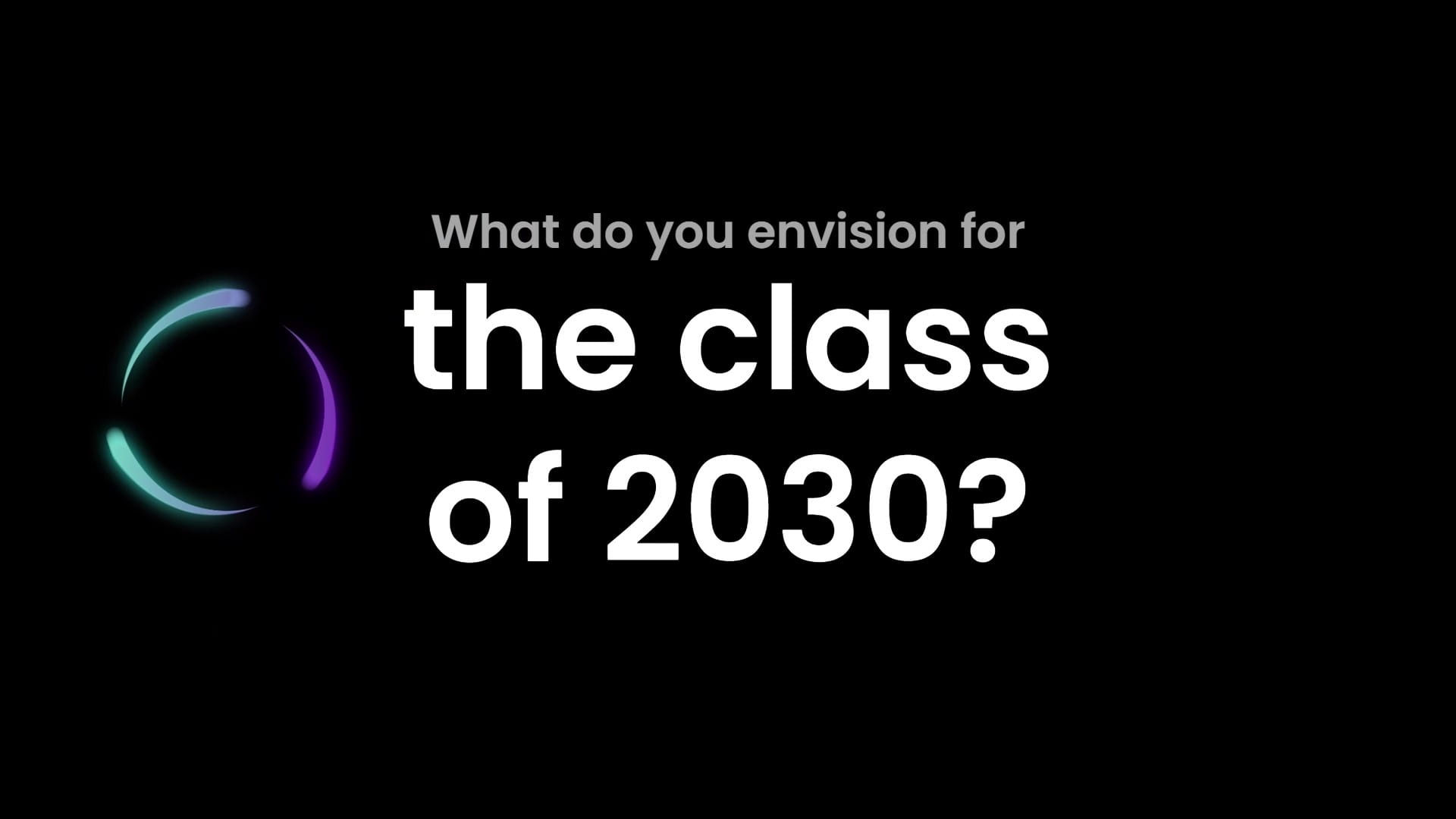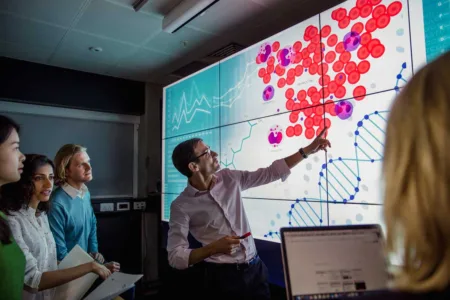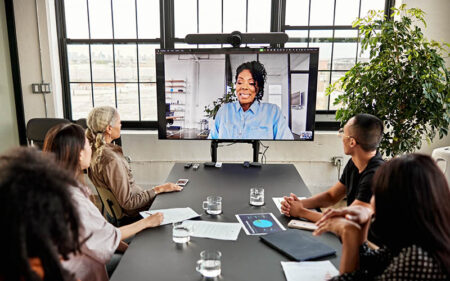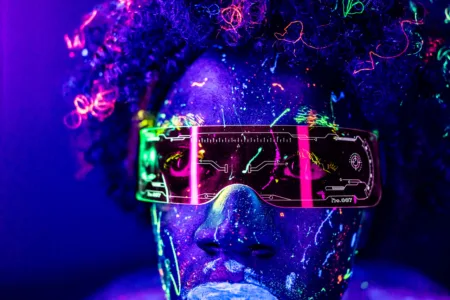How will new AV solutions impact the learning and teaching experience?
November 2, 2022
What do you envision for the class of 2030?
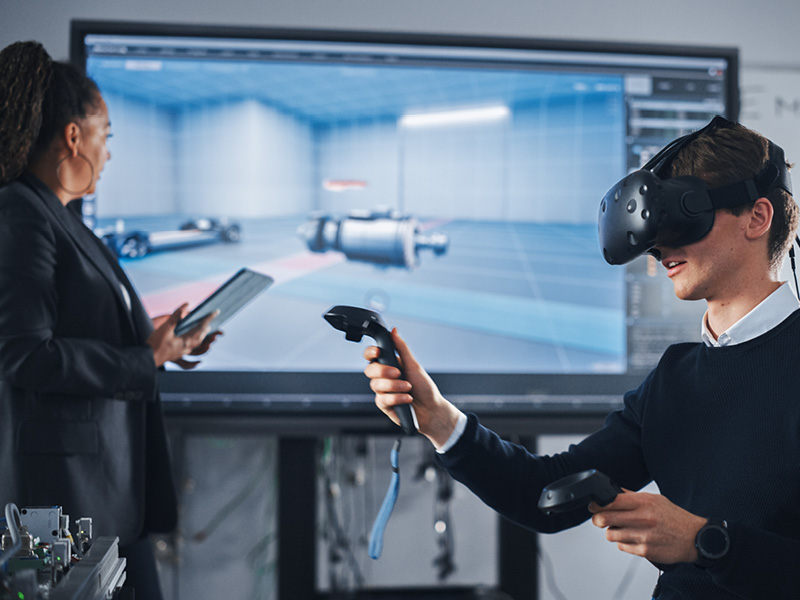
This is the third article in our blog series dedicated to sharing insights from Kramer’s experts in AV for education. In these posts, we delve into how the educational experience is evolving and inspiring AV innovation to support scholastic excellence in K-12 and higher education around the world.
Now that we’ve explored recent AV changes and delved deeper into regional AV trends, it’s time to look toward the future – and dream. In this blog, our experts give us a sneak peek into the future, sharing their visions for the class of 2030. While some ideas may sound more on the science fiction fantasy side, much of it is already on the cusp of happening, perhaps even sooner than we may think.
Insights and experiences shared by: Sefi Aharon, Director, Education Markets Development (Global), Marc A. Remond, President, Asia Pacific, Kristen Garner, Director of Business Development US Education Sales, Bharat Kerai, Director of Global Strategic Accounts, UK, Jared Walley, Regional Sales Manager Australia, Kirti Shetti, India Country Manager, Nir Elizov, Israel Pre-Sales Manager.
What do you envision for the class of 2030? How will new AV solutions impact the learning and teaching experience?
Sefi Aharon: From my personal experience, I can tell you that today’s children, the ones who are now 5-10 years old, live in a virtual world. My two kids play with their apps and digital games all the time. Using avatars, they literally play with their friends and meet in imaginary worlds. And I think that’s where we’re going in many aspects of life, including education. We’re not there yet, but I think augmented reality (AR) and virtual reality (VR) will become something that is not just for research laboratories or specific types of classes, but instead more of a common ground for all students. It’s going to be a very interesting future! The changes are starting now, but they’ll apply mostly to today’s smaller kids as they go through the system.
The concept is in its infancy, but in a way, it’s already connected to the physi-digi world our children live in. Right now, in the morning they go to a physical classroom, in the physical world. But in the afternoon, they are already actually living in a digital world, in front of their screens. And hence, I see the need for the education market to match up to their reality and way of experiencing things. That means education will be on some type of virtual platform like the metaverse and others to come.

Marc A. Remond: Based on current consumption trends, I expect video will play a much bigger part in the class of 2030. This means the AV solution will have to support even higher resolution and frame rates.
There may also be video with AR (Augmented Reality) content. For instance, I could use my phone’s camera to look at an object, and get the information displayed as an overlay on the object. And it’s not only shared with the students in the same room but also captured and sent to remote students as well.

Virtual reality is great for asynchronous content, so maybe it will be used for on-demand e-learning. However, I don’t see VR (virtual reality) being accepted as a mainstream solution for the classroom, because VR solutions require a specific headset. Live instruction requiring students to wear headsets and use all kinds of remote controls is less likely unless you’re doing very niche education applications such as in engineering.
Kristen Garner: We’re moving away from the ‘teacher at the chalkboard’ type of instruction and towards technology that’s able to digitalize that content, so we can deliver it through an asynchronous model, making it easier for students to consume.
We’re just scratching the surface on this, but I feel like learning is going to be more dictated by the students and their desires, and how they gather information. Are they a night owl? Are they an early bird? Are they someone who prefers a small screen and not a lot of interactivity with other students? Or are they someone who really relies on that interaction with other humans and people?

With digital capabilities, we’re able to bridge the one-size-fits-all style of teaching to deliver content and transfer knowledge in a way that’s more flexible, for how different types of students learn.
Beyond 2030, I presume we’ll be seeing more AI. Everyone has an avatar out there, for example. And it’s possible we’ll be seeing the flexibility of learning extended in kind, with your avatar sometimes attending classes for you – so your virtual self is present in the classroom – and even coming back with notes.
Bharat Kerai: We think 2030 is far away, but it’s not. We’ve seen technology really push itself during pandemic lockdowns and today I’m a big fan of the way virtual classrooms work. We’re nearly there with virtual classrooms. But I’ve also got my eye on the metaverse. It’s a solution that’s moving forward. And I really see a good hybrid situation coming where we’ve got a metaverse and what we call a real-world hybrid environment. So, you know, teachers can be in the metaverse, meaning they’re anywhere, educating students in the real world as well as the virtual world.

Today, we’re literally halfway there. We’re in version 0.5 of a metaverse. For remote learning, we’re sitting in a real world, and when we connect on Teams or Zoom, coming into a virtual world. Soon, however, I’d imagine, we’ll find ourselves extending this, walking around, going into different classrooms in a metaverse environment, so there is life-like interaction, but the students and teachers can actually be anywhere.
Jared Walley: When I look ahead five to 10 years from now, I think that the first thing that we’re going to see is budgets shifting from delivering building infrastructure to delivering digital infrastructure and digital technologies. I think that’s going to be a big need.
From that, I think we’ll see more software-centric solutions, open standards, and the ability to fully manage integrated solutions with our IT systems.

We also need more personalization to improve the education experience. More flexible user experiences, flexible interface designs, and things like that.
And we’re definitely going to see an uptake of virtual augmented and blended reality technologies.
Kirti Shetti: Back in 2015, I was talking about what the class of 2020 would look like, and it was hybrid and collaborative. So, even without knowing the pandemic would come, I got that right. Now looking to 2030, I think that will continue to grow, but a few elements will get added, make it more immersive, and personalized, which I think is going to be the next big thing in education.

The other thing which will be incorporated is more artificial intelligence. Everything in every technological space needs to be seamless, and artificial intelligence is going to play a major role in that. Plus, as many jobs become increasingly automated, being able to work with AI will become part of the skill-base required to understand things like blockchain technology and succeed in the professions of tomorrow.
And then, we’ll have augmented reality, or virtual reality, mixed in, bringing experiential content to classrooms, so students can learn it better.
Nir Elizov: AVoIP is the latest big step in terms of progress, and it will likely be part of new school designs in the future, if not already today. That’s because IP gives you the ability to broadcast any type of content to any type of room, which translates into a lot of flexibility in managing schools in different ways.

Video and audio transmission will also be much faster, and easier, using IT, the internet, cables, and technology. That is a big change.
Also, looking ahead to 2030 and beyond, I expect there will be more demand for central management tools, not just a solution for the room or auditorium, as more AV technology is adapted by schools.
Stay tuned for the next post, in which our educational experts delve into how AV experiences can get this generation of kids more engaged with learning.
In the meantime, read the previous blogs in this series, in which our experts discuss:
Would you like to consult with Kramer?


